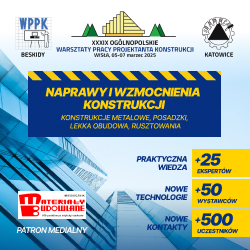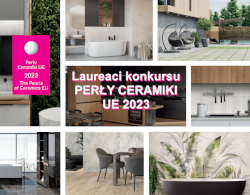dr inż. Robert Bucoń Politechnika Lubelska,Wydział Budownictwa i Architektury
Autor do korespondencji e-mail : Ten adres pocztowy jest chroniony przed spamowaniem. Aby go zobaczyć, konieczne jest włączenie w przeglądarce obsługi JavaScript.
DOI: 10.15199/33.2016.06.49
Utrzymanie wielorodzinnych budynków mieszkalnych jest złożonymi wieloetapowym zagadnieniem, które obejmuje wielokryterialną ocenę stanu budynku, wariantowanie napraw oraz optymalizację wyboru działań remontowych. Przedstawione w artykule badania odnoszą się do planowania wydatków na utrzymanie budynków mieszkalnych. Opracowany model matematyczny pozwala określić koszt i zakres działań naprawczychwcelu osiągnięcia zakładanego stanu eksploatacyjnego budynku.Aby rozwiązać poszczególne zadania modelu, zastosowano metody wielokryterialnego wspomagania decyzji oraz programowania liniowego.
Słowa kluczowe: wymagania eksploatacyjne, ocena budynku, naprawa, remont.
* * *
Expenditure planning for the maintenance of multi-family residential buildings
Maintenance of multi-family residential buildings is a complex and multi-stage problem, which covers multi-criteria assessment of a building’s state, repair variants and optimization of the choice of renovation activities. The studies presented in the article refer to planning expenditures for the maintenance of residential buildings. The developed mathematical model allows to determine the cost and the scope of repair activities to achieve assumed exploitation state of a building. In order to solve particular tasksmulticriterial decisionmakingmethods and linear programming have been applied.
Keywords: exploitation requirements, building evaluation, repair, renovation.
[1] Christen Markus, Jules Schroeder, Wallbaum Holger. 2014. „Evaluation of strategic building maintenance and refurbishment budgeting method Schroeder”. International Journal of Strategic Property Management 18 (4): 393 – 406. DOI: 10.3846/1648715X.2014.971917.
[2] Juan Yi-Kai, Kim Jun Ha, Kathy Roper, Lacouture Daniel Castro. 2009. „GA – based decision support system for housing condition assessment and refurbishment strategies”. Automation in Construction 18 (4): 394 – 401. DOI: 10.1016/j.autcon.2008.10.006.
[3] Perng Yeng-Horng, JuanYi-Kai,HsuHuang-Shing. 2007. „Genetic algorithm-based decision support for the restoration budget allocation of historical buildings”. Building and Environment 42 (2): 770–778.DOI: 10.1016/j.buildenv. 2005.09.009.
[4] Rosa Lucio,Assed Haddad. 2013. „Assessing the sustainability of existing buildings using the analytic hierarchy process”. American Journal of Civil Engineering 1 (1): 24 – 30. DOI: 10.11648/j.ajce.20130101.14.
[5] Ustawa z 7 lipca 1994 r. Prawo budowlane (Dz.U. 10.243.1623).
[6] Zavadskas Edmundas Kazimieras, Arturas Kaklauskas, Zenonas Turskis. 1997. „Multicriteria decision-making system for building retrofit”. Journal of Civil Engineering and Management 3 (4): 62 – 68.
Otrzymano: 13.04.2016 r.
Materiały Budowlane 06/2016, str 114-115 (spis treści >>)



























